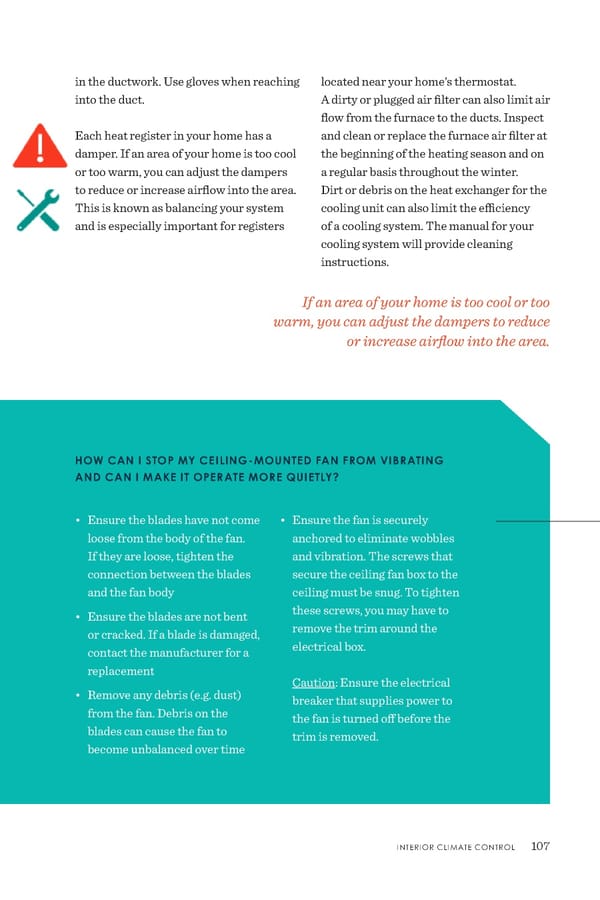If an area of your home is too cool or too warm, you can adjust the dampers to reduce or increase airflow into the area. • Ensure the blades have not come loose from the body of the fan. If they are loose, tighten the connection between the blades and the fan body • Ensure the blades are not bent or cracked. If a blade is damaged, contact the manufacturer for a replacement • Remove any debris (e.g. dust) from the fan. Debris on the blades can cause the fan to become unbalanced over time • Ensure the fan is securely anchored to eliminate wobbles and vibration. The screws that secure the ceiling fan box to the ceiling must be snug. To tighten these screws, you may have to remove the trim around the electrical box. Caution : Ensure the electrical breaker that supplies power to the fan is turned off before the trim is removed. HOW CAN I STOP MY CEILING-MOUNTED FAN FROM VIBRATING AND CAN I MAKE IT OPERATE MORE QUIETLY? in the ductwork. Use gloves when reaching into the duct. Each heat register in your home has a damper. If an area of your home is too cool or too warm, you can adjust the dampers to reduce or increase airflow into the area. This is known as balancing your system and is especially important for registers located near your home’s thermostat. A dirty or plugged air filter can also limit air flow from the furnace to the ducts. Inspect and clean or replace the furnace air filter at the beginning of the heating season and on a regular basis throughout the winter. Dirt or debris on the heat exchanger for the cooling unit can also limit the efficiency of a cooling system. The manual for your cooling system will provide cleaning instructions. INTERIOR CLIMATE CONTROL 107
 ANHWP Care & Maintenance Guide 2022 Page 108 Page 110
ANHWP Care & Maintenance Guide 2022 Page 108 Page 110